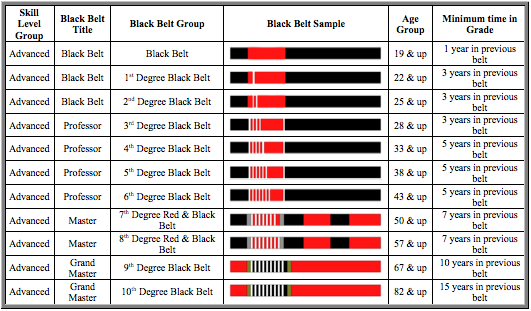Do you know how many degrees of black belt there are in Brazilian Jiu-Jitsu? The BJJ black belt is not just a single level of mastery but a journey with multiple stages of progression.
Understanding these degrees can be crucial for practitioners aiming to advance and for enthusiasts curious about the intricacies of the BJJ ranking system. Continue reading to learn more!
Black Belt in Brazilian Jiu-Jitsu

Earning a black belt in Brazilian Jiu-Jitsu is the pinnacle of achievement, symbolizing years of rigorous training, unwavering discipline, and profound mastery of the art.
Those who attain this rank are often called “professors” or “coaches,” though the titles can vary between schools and organizations.
However, achieving a black belt does not signify the end of learning. BJJ is a constantly evolving martial art; even black belts must continuously refine their skills and adapt to new techniques and strategies.
The requirements and criteria for each degree of the black belt can vary slightly between organizations like the SJJIF and the IBJJF, reflecting the diverse approaches within the BJJ community.
Black Belt Degrees in Brazilian Jiu-Jitsu

The black belt in Brazilian jiu-jitsu consists of eleven levels, each containing ten degrees. Skilled fighters can progress from a standard black belt (with no degree) to a tenth-degree black belt.

1st Degree Black Belt
A 1st-degree black belt follows the standard black belt and signifies advanced proficiency. Achieving this rank can take up to 11 years or more.
The SJJIF states that 11 years of practice is needed, while the IBJJF requires 13 years.
2nd Degree Black Belt
The 2nd-degree black belt is a high rank that can take up to 14 years or more of practice.
The SJJIF suggests 14 years, while the IBJJF requires 16 years of training to reach this level.
3rd Degree Black Belt
A 3rd-degree black belt indicates a high level of expertise and typically takes up to 17 years of practice.
The SJJIF requires 17 years, while the IBJJF demands 19 years.
4th Degree Black Belt
The 4th-degree black belt is an advanced rank achieved after at least 22 years of practice. Both the SJJIF and IBJJF require 22 years to reach this level.
5th Degree Black Belt
This rank represents significant expertise and can take up to 25 years of practice. The SJJIF suggests 27 years, while the IBJJF requires 25 years.

6th Degree Black Belt
A 6th-degree black belt signifies high proficiency and requires 28 years or more of practice. The SJJIF requires 32 years, while the IBJJF requires 28 years.
7th Degree Black Belt
The 7th-degree black belt, represented by a coral belt, can take up to 32 years of practice. The SJJIF requires 39 years, while the IBJJF requires 32 years.
8th Degree Black Belt
An 8th-degree black belt, also known as a coral belt, signifies mastery and can take up to 39 years to attain. The SJJIF suggests 46 years, while the IBJJF requires 39 years.
9th Degree Black Belt
The 9th-degree black belt, represented by a red belt, is awarded to Grand Masters after 49 years of practice. The SJJIF requires 56 years, while the IBJJF requires 49 years.
10th Degree Black Belt
The 10th-degree black belt is the pinnacle, typically achieved after up to 64 years of practice. The SJJIF requires 71 years, while the IBJJF requires 64 years.
Final Thoughts
BJJ has a unique belt ranking system, with the black belt being the highest and most advanced rank.
Earning higher degrees can be lengthy, taking up to 64 years to achieve a 10th-degree black belt.
At these levels, the focus should be on contributing to the growth of this martial art rather than the time taken.


